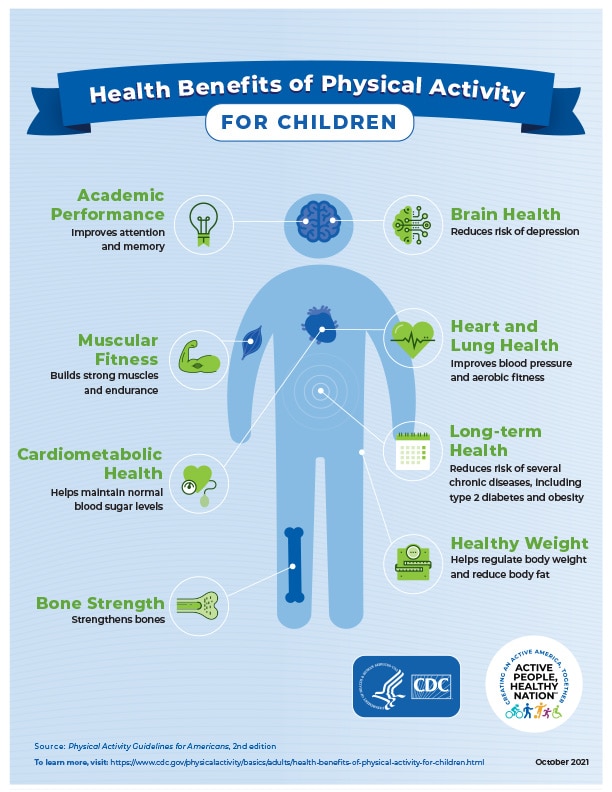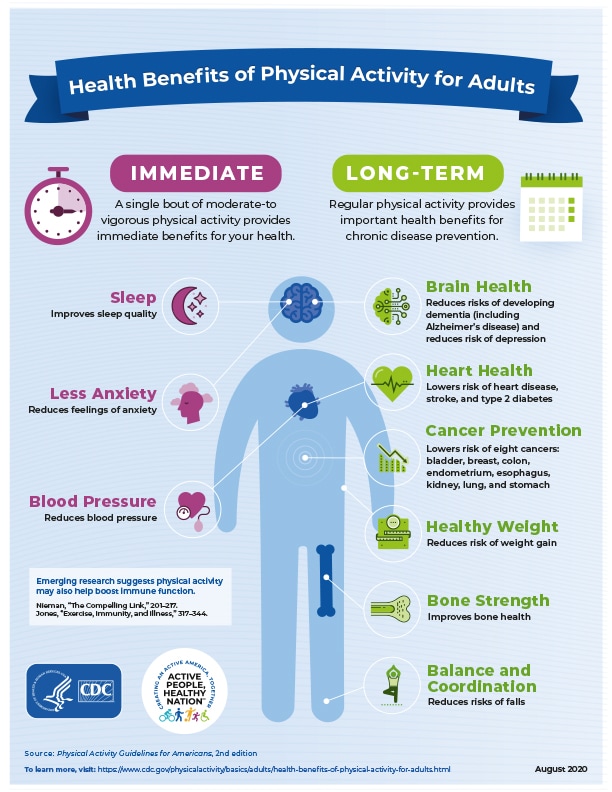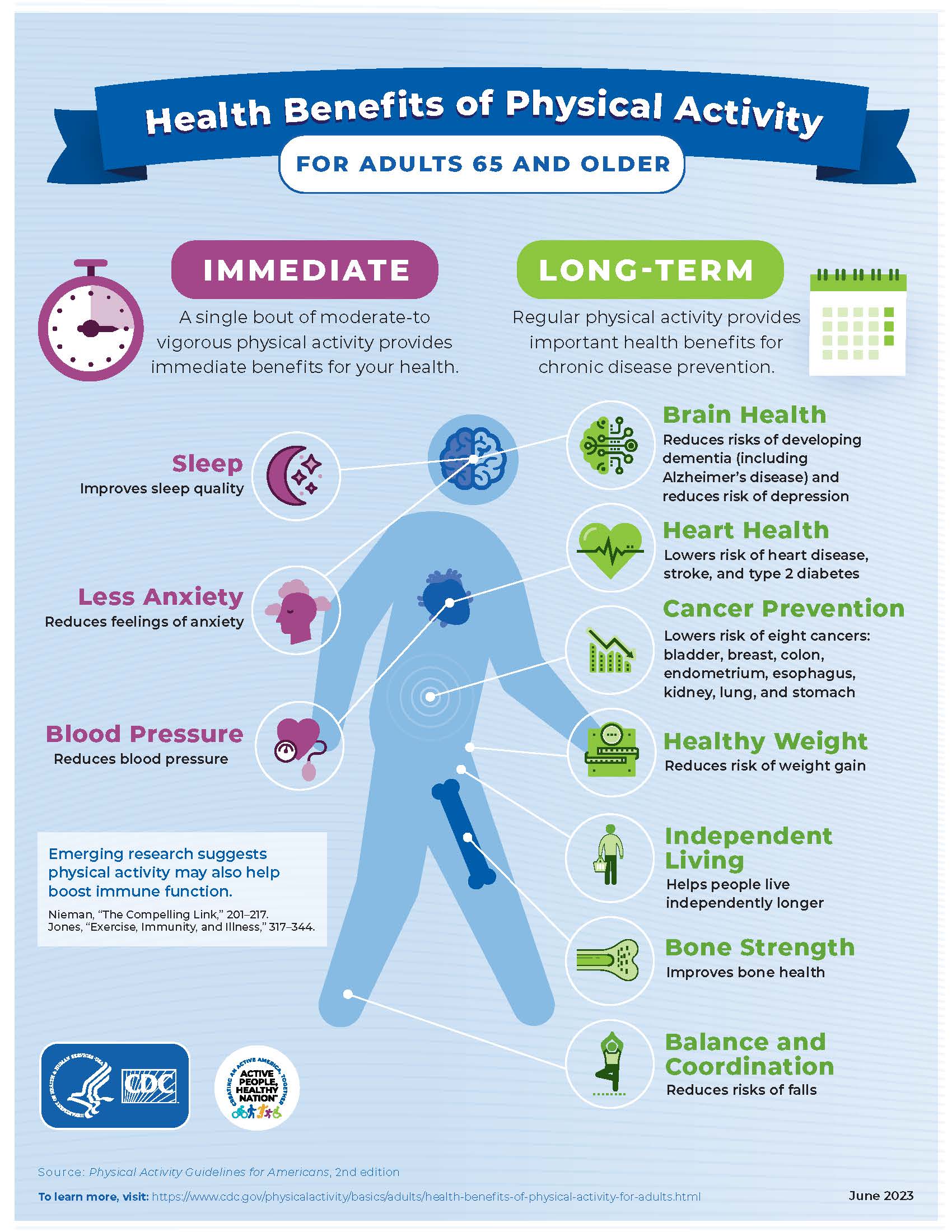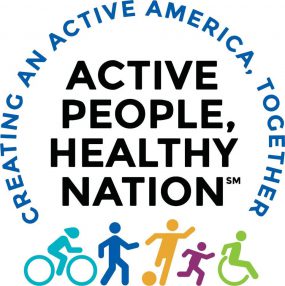Health Benefits of Physical Activity for Children, Adults, and Adults 65 and Older
Academic Performance
– Improves attention and memory
Brain Health
– Reduces risk of depression
Muscular Fitness
– Builds strong muscles and endurance
Heart and Lung Health
– Improves blood pressure and aerobic fitness
Cardiometabolic Health
– Helps maintain normal blood sugar levels
Long-term Health
– Reduces risk of several chronic diseases, including type 2 diabetes and obesity
Bone Strength
– Strengthens bones
Healthy Weight
– Helps regulate body weight and reduce body fat
Immediate Benefits for Adults
A single bout of moderate-to vigorous physical activity provides immediate benefits for your health.
Sleep
– Improves sleep quality
Less Anxiety
– Reduces feelings of anxiety
Blood Pressure
– Reduces blood pressure
Long-term Benefits for Adults
Regular physical activity provides important health benefits for chronic disease prevention.
Brain Health
– Reduces risks of developing dementia (including Alzheimer’s disease) and reduces risk of depression
Heart Health
– Lowers risk of heart disease, stroke, and type 2 diabetes
Cancer Prevention
-Lowers risk of eight cancers: bladder, breast, colon, endometrium, esophagus, kidney, lung, and stomach
Healthy Weight
– Reduces risk of weight gain
Bone Strength
– Improves bone health
Balance and Coordination
– Reduces risks of falls
Emerging research suggests physical activity may also help boost immune function.1,2
Immediate Benefits for Adults 65 and Older
A single bout of moderate-to vigorous physical activity provides immediate benefits for your health.
Sleep
– Improves sleep quality
Less Anxiety
– Reduces feelings of anxiety
Blood Pressure
– Reduces blood pressure
Long-term Benefits for Adults 65 and Older
Regular physical activity provides important health benefits for chronic disease prevention.
Brain Health
– Reduces risks of developing dementia (including Alzheimer’s disease) and reduces risk of depression
Heart Health
– Lowers risk of heart disease, stroke, and type 2 diabetes
Cancer Prevention
-Lowers risk of eight cancers: bladder, breast, colon, endometrium, esophagus, kidney, lung, and stomach
Healthy Weight
– Reduces risk of weight gain
Independent Living
– Helps people live independently longer
Bone Strength
– Improves bone health
Balance and Coordination
– Reduces risks of falls
Emerging research suggests physical activity may also help boost immune function.1,2
Source: Physical Activity Guidelines for Americans, 2nd edition (Chapter 2, page 32)
- Nieman, D. C., & Wentz, L. M. (2019). The compelling link between physical activity and the body’s defense system. Journal of sport and health science, 8(3), 201-217.
- Jones, A. W., & Davison, G. (2019). Exercise, Immunity, and Illness. In Muscle and Exercise Physiology (pp. 317-344). Academic Press.




